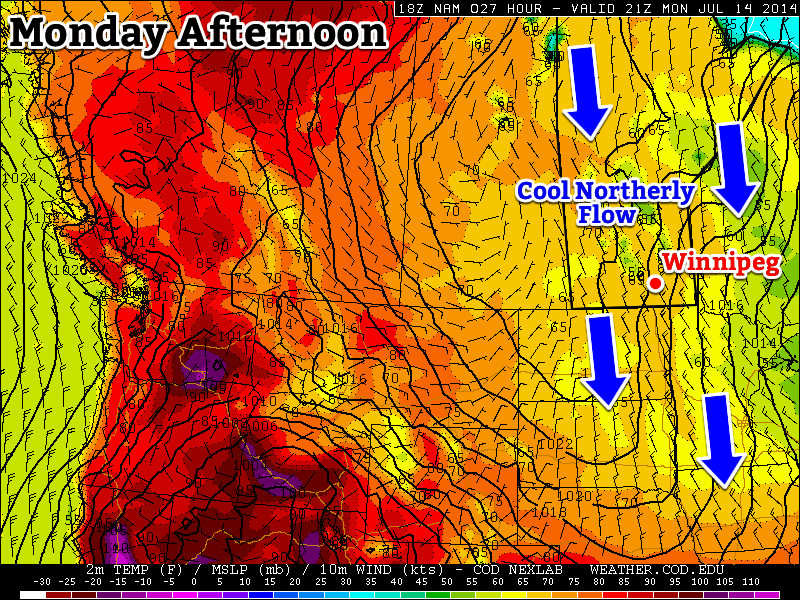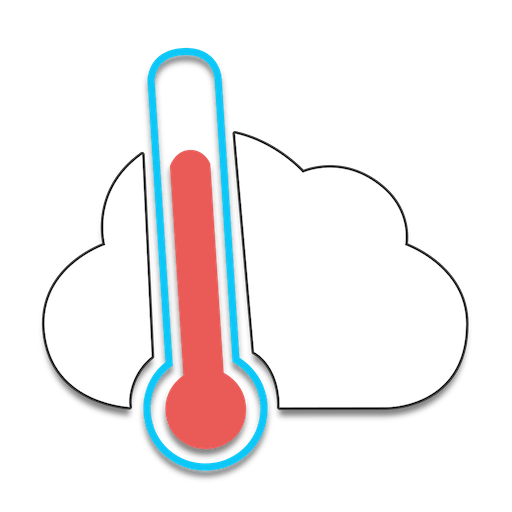A long-deserved taste of summer is in store for Southern Mantioba as the temperature rises with little chance of precipitation until the end of the week.
An upper-level ridge of high pressure building into the region will tap some of the record-breaking heat over British Columbia and slowly spread it eastwards over the Prairies. While we won’t see temperatures nearly has hot as the 40°C+ they’ve seen in B.C., temperatures will push towards the 30°C mark by week’s end. While some scattered thunderstorm activity is possible Thursday night, in general it looks like it will be quite dry in many places over the next couple days. With all the heat, it does look like a more organized thunderstorm threat is set to re-develop on Friday in the Red River Valley.
Today will be a beautiful summer day with a seasonal high of 26°C and relatively light winds out of the south at 15-25km/h. Tonight will be mainly clear with light winds and a temperature dropping to around 15°C.
Thursday will see the heat really begin to show up with temperatures climbing into the upper 20’s to just over the 30°C mark across much of Southern Manitoba. Winds will be out of the south or southwest at 20-30km/h. By evening, a weak cold front will move in from the northwest and will likely spark of some scattered thunderstorm activity over Western Manitoba that may slowly spread SE into the Red River Valley overnight. At this point, it doesn’t appear that there will be a significant threat of severe thunderstorms with Thursday’s activity.
Thunderstorm Threat Returns Friday
Friday will start off with a slight chance of showers or thundershowers if Thursday night’s convection manages to make it this far east, but then see temperatures once again approach 30°C with winds building out of the south to around 30km/h. The cold front that moved in Thursday will lift back northwards ahead of another approaching low pressure system and the associated incoming upper-level trough will likely generate thunderstorm activity through the Red River Valley on Friday afternoon into the evening.

With in excess of 1500J/kg of CAPE, 30-40kt of bulk shear, fair surface moisture and the strong dynamical forcing of the upper-level trough coupled with enhanced lift in the right entrance region of the jet, it looks like there will probably be a slight risk for severe thunderstorms. At this point, the main threats look to be wind and hail, although if things continue to trend in a similar direction, the Red River Valley could see one of it’s first organized tornado threats of the year. We’ll be keeping a keen eye on things and have updates later in the week.




